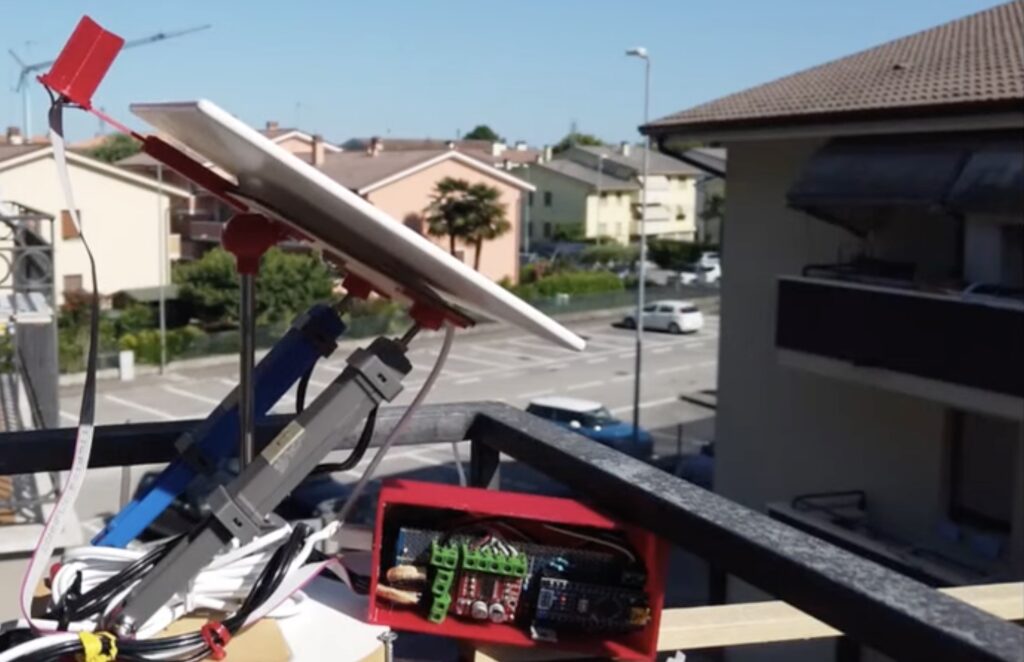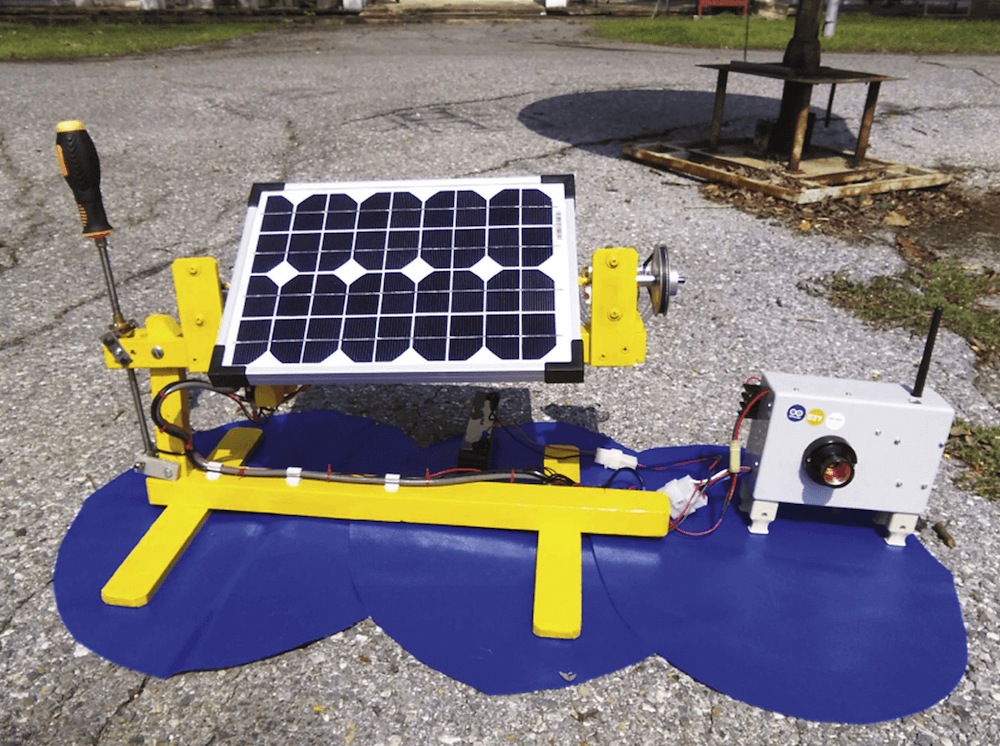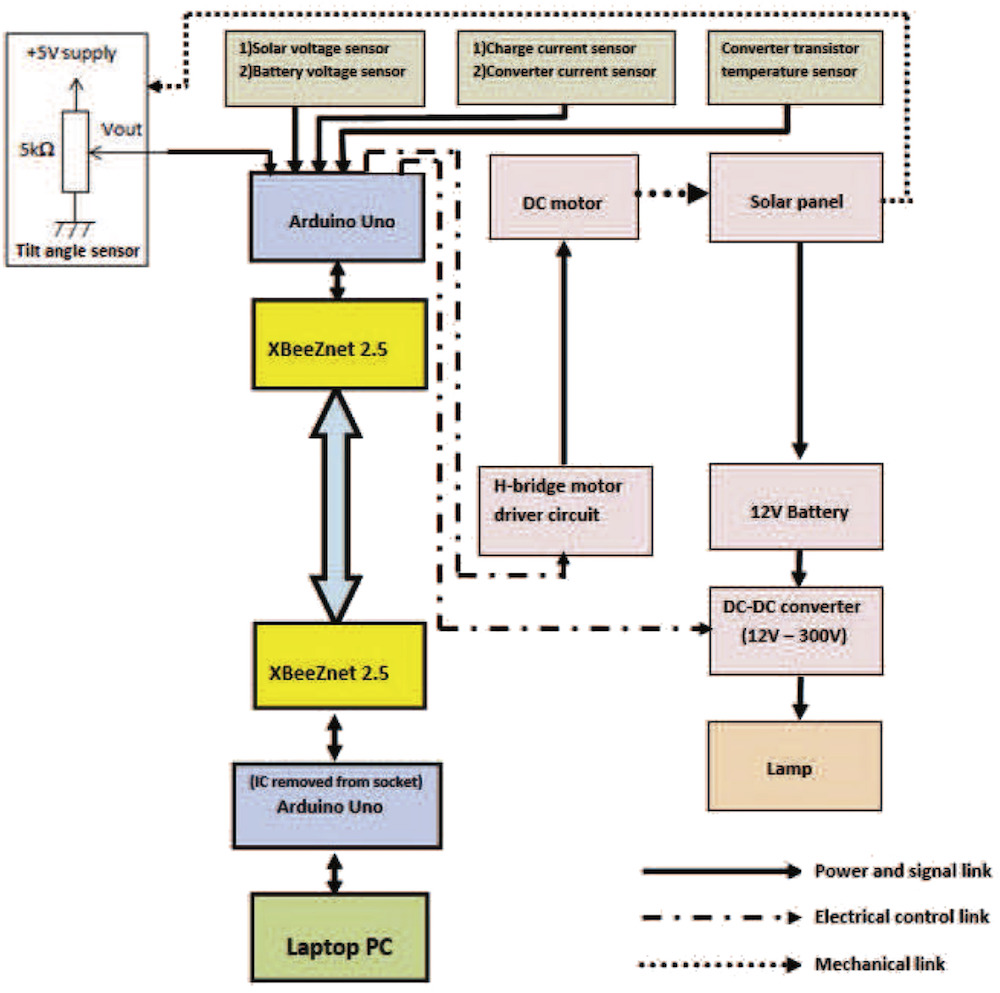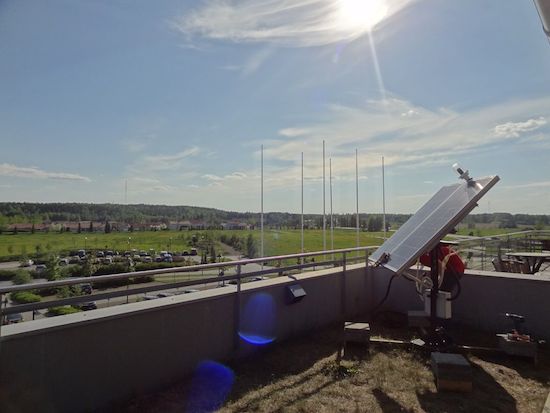12

While a solar panel mounted to the top of a roof, lamp post, or the side of a building will produce power, it is nowhere near optimal for achieving the maximum efficiency possible. To get better results, panels are often mounted to pivots and linear actuators/servo motors that continually move to always face the sun. But as Fulvio points out, these motors can be heavy and require extra batteries to function, which is what inspired him to create the mysoltrk to address this shortcoming. Fulvio built the tracker to be small, solid, and sturdy enough to stand outdoors on a balcony, in a garden, or the like.
Mysoltrk relies on a pair of very simple yet robust actuators that are each based around a 6V 30RPM geared DC motor, which spins a threaded rod to move an M3 nut closer or further away. When placed in the same plane and connected via a ball joint at the top, this triangle of is able to maneuver the panel in three axes.
Both motors were then wired to an L298N motor driver which is controlled by an Arduino Nano. Having to incorporate Wi-Fi or a GPS receiver would have introduced far too much complexity, so these components were replaced by a matrix of four photoresistors and a tracking algorithm that, in essence, attempts to balance the readings across all of them in order to point directly at the sun. Perhaps the most incredible part of this project is how no batteries are required thanks to the low-power motors.
For more information about mysoltrk, which was recently selected as a finalist in the 2023 Hackaday Prize Green Hacks challenge, you can read Fulvio’s write-up here.
The post Mysoltrk is a low-cost solar panel tracking system appeared first on Arduino Blog.








